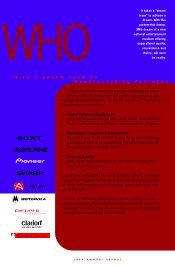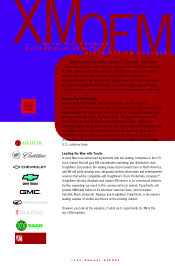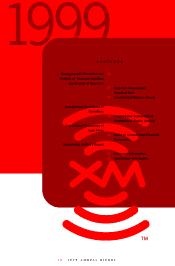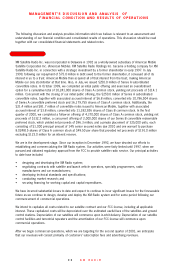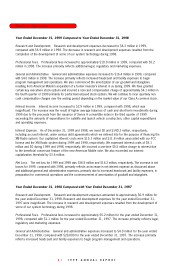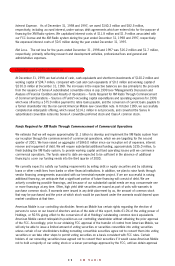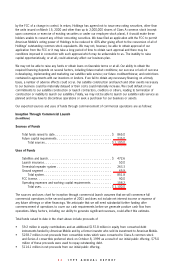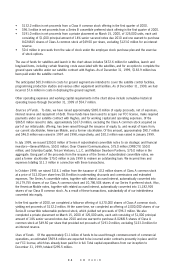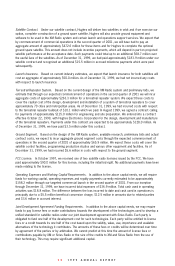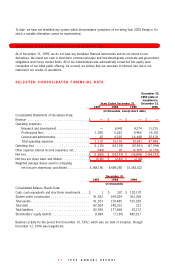XM Radio 1999 Annual Report Download - page 19
Download and view the complete annual report
Please find page 19 of the 1999 XM Radio annual report below. You can navigate through the pages in the report by either clicking on the pages listed below, or by using the keyword search tool below to find specific information within the annual report.
17 1999 ANNUAL REPORT
GO!
ALL SYSTEMS ARE GO!
World’s Most Powerful Satellites
XM’s geostationary satellite system will employ two Hughes HS 702 15 kW
satellites – the most powerful commercial satellites in the world – twice the
power of satellites used in the DBS business. Combined with a system of
approximately 1,500 terrestrial repeaters installed in up to 70 of the nation’s
largest urban markets, we will provide seamless, nationwide digital-quality sound.
The geostationary orbit design and technology of our Hughes-built fleet is the
world standard for commercial satellite communications systems. Our two
satellites, XM Rock and XM Roll, will be located respectively at 115 and 85
degrees West Longitude, ensuring optimal signal strength. The footprint of
each satellite will cover the entire continental U.S., ensuring ongoing
operations in the event of a launch or in-orbit failure.
Proven Technology
When it comes to building the future, it is experience that counts. In XM’s
case, we are utilizing proven satellite technology and next-generation chipsets
built by the manufacturers of, and suppliers to, the world’s first and only digital
satellite radio systems. WorldSpace’s AfriStarTM system has been operating in
Africa since the middle of 1999 with outstanding technical performance.
Additionally, its AsiaStarTM satellite was successfully launched in March 2000.
Construction of our system is proceeding on time, on schedule and on
budget. The satellites are in the final stages of construction at Hughes’ state-
of-the-art satellite manufacturing facility in California. In April 2000, Alcatel will
ship the first payload from its facilities in France for integration with the
satellite in California. We have already conducted repeater testing in Europe
and the U.S. and have initiated additional testing and commenced buildout of
our repeater system.
Unified Technology Standard
Early in 2000, we reached a joint technology agreement with Sirius Satellite
Radio -- the only other licensed SDARS provider -- to develop a unified
technology standard. Through our cooperative development of a dual-mode
radio, we are ensuring that the U.S. satellite radio market will be even larger
than originally anticipated by creating a radio that can receive AM, FM and
both companies’ satellite radio broadcasts. We believe our single satellite
radio standard will accelerate subscriber uptake of satellite radio, just as a
single, unified cellular telephone standard in Europe generated subscriber
penetration levels significantly higher than those of the U.S. market, where
four competing standards exist.
iT’S HAPPENiNG!








